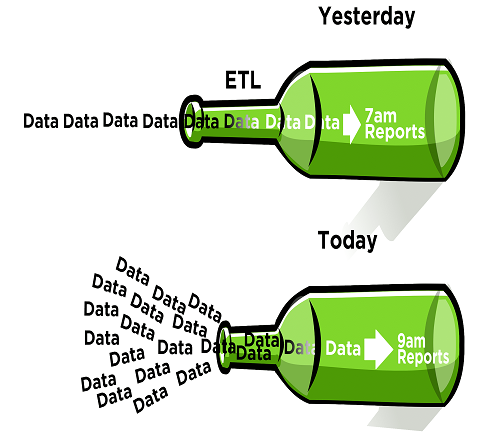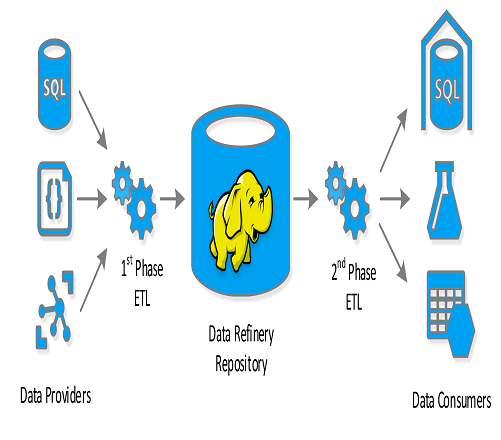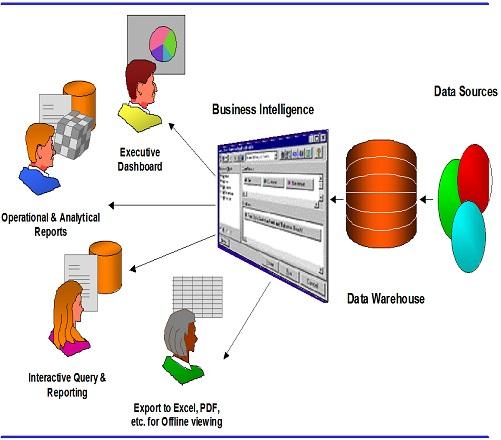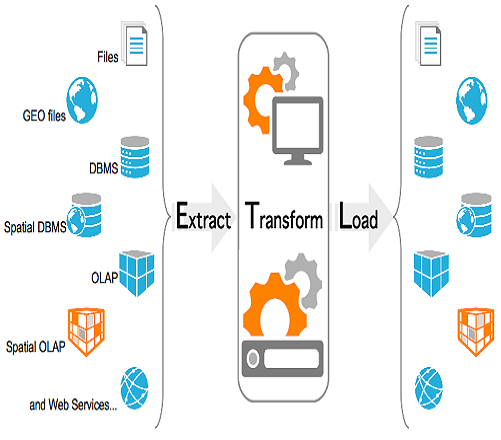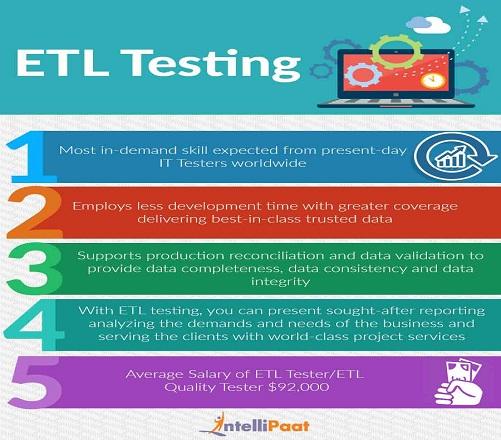ETL Assessment For ETL Developers Quiz
(567).jpg)
Take this ETL assessment designed for ETL developers to test your knowledge. ETL is the process performed in the data warehouses. It involves the extraction of data from multiple data sources. An ETL developer is responsible for carrying out this ETL process effectively in order to get the data warehouse information from unstructured data. This test is useful to test the basic skills of ETL developers. All the best for a perfect score on this quiz. Share it with others also.
- 1.
What does the acronym ETL stands for?
- A.
Extract, Transfer and Load
- B.
Explain, Transfer and Lead
- C.
Effect, Transfer and Load
- D.
Extract, Transform and Load
Correct Answer
D. Extract, Transform and LoadExplanation
The correct answer is "Extract, Transform and Load". ETL is a process used in data warehousing and data integration. It involves extracting data from various sources, transforming it into a format suitable for analysis or reporting, and loading it into a target database or data warehouse. This acronym accurately describes the three main steps involved in the ETL process.Rate this question:
-
- 2.
Where is ETL as a process performed?
- A.
Data Storage
- B.
Data Warehouse
- C.
Data Mines
- D.
None of the above
Correct Answer
B. Data WarehouseExplanation
ETL (Extract, Transform, Load) is a process performed in a Data Warehouse. The purpose of ETL is to extract data from various sources, transform it into a consistent format, and load it into the Data Warehouse for analysis and reporting. This process helps to integrate data from different systems and ensure data quality and consistency within the Data Warehouse. Therefore, the correct answer is Data Warehouse.Rate this question:
-
- 3.
ETL involves the extraction of data from how many data sources?
- A.
Three
- B.
Two
- C.
Multiple
- D.
One
Correct Answer
C. MultipleExplanation
ETL (Extract, Transform, Load) involves the process of extracting data from multiple data sources. This means that data is collected and gathered from various databases, systems, or files. The extracted data is then transformed and standardized to fit into a common format or structure. Finally, the transformed data is loaded into a target system or data warehouse for further analysis and reporting. This allows organizations to integrate and consolidate data from different sources, enabling better decision-making and data-driven insights.Rate this question:
-
- 4.
What type of data does an ETL developer gets data warehouse information from after implementing the ETL processes?
- A.
Structured Data
- B.
Formed Data
- C.
Unstructured Data
- D.
Unformed Data
Correct Answer
C. Unstructured DataExplanation
After implementing the ETL processes, an ETL developer gets data warehouse information from unstructured data. Unstructured data refers to data that does not have a predefined data model or organization. This type of data can include text documents, social media posts, emails, and other forms of data that do not fit into a traditional structured format. ETL processes are used to extract, transform, and load this unstructured data into a structured format that can be easily analyzed and utilized in a data warehouse.Rate this question:
-
- 5.
Which of the following is TRUE for 3-tier data warehouses?
- A.
Once created, the data marts will directly receive their new data from the operational databases
- B.
A data mart becomes a data warehouse when it reaches a critical size
- C.
The data marts are different groups of tables in the data warehouse
- D.
Once created, the data marts will keep on being updated from the data warehouse at periodic times
Correct Answer
A. Once created, the data marts will directly receive their new data from the operational databases -
- 6.
Which one is a tool used by ETL developers?
- A.
IBM Cognos BI
- B.
Excel
- C.
Informatica PowerCenter
- D.
None of the above
Correct Answer
C. Informatica PowerCenterExplanation
Informatica PowerCenter is a popular tool used by ETL (Extract, Transform, Load) developers. It is a data integration platform that allows developers to extract data from various sources, transform it according to business rules, and load it into a target database or data warehouse. With its user-friendly interface and powerful features, Informatica PowerCenter simplifies the ETL process and enables developers to efficiently manage and manipulate large volumes of data. Excel and IBM Cognos BI, on the other hand, are not specifically designed for ETL tasks, making Informatica PowerCenter the correct answer.Rate this question:
-
- 7.
Which of the following is a relationship?
- A.
Link between entities
- B.
A person, place, or thing
- C.
Property or characteristic of an entity
- D.
Weak entity
Correct Answer
A. Link between entitiesExplanation
A relationship refers to the link or connection between entities. It represents how two or more entities are associated or connected to each other. It describes the interaction, dependency, or association between the entities. Therefore, "Link between entities" is the correct answer as it accurately describes the nature of a relationship.Rate this question:
-
- 8.
Which process cannot be categorized under ETL?
- A.
Data Validation
- B.
Data Visualization
- C.
Data Cleaning
- D.
Data Loading
Correct Answer
B. Data VisualizationExplanation
Data Visualization is not a process that falls under ETL (Extract, Transform, Load). ETL processes involve extracting data from various sources, transforming or manipulating the data to fit the desired format or structure, and then loading it into a target system or database. Data Visualization, on the other hand, is the process of presenting data in a visual or graphical format to gain insights or communicate information effectively. While it may utilize data that has already been extracted, transformed, and loaded, it is not a direct part of the ETL process itself.Rate this question:
-
- 9.
Which database language is most used for ETL processes?
- A.
Oracle
- B.
FoxPro
- C.
SQL
- D.
DBase
Correct Answer
C. SQLExplanation
SQL is the most widely used database language for ETL (Extract, Transform, Load) processes. ETL involves extracting data from various sources, transforming it into a suitable format, and then loading it into a target database or data warehouse. SQL is commonly used for querying and manipulating data in relational databases, making it an ideal choice for ETL tasks. It provides a comprehensive set of commands and functions for data extraction, transformation, and loading, allowing developers to efficiently perform these processes. Oracle, dBase, and FoxPro are specific database management systems, while SQL is the language used to interact with these systems.Rate this question:
-
- 10.
Which one is not a data source used for ETL?
- A.
ERP
- B.
Operational Systems
- C.
CRM
- D.
SJT
Correct Answer
D. SJTExplanation
The correct answer is SJT because SJT is not a data source used for ETL (Extract, Transform, Load) processes. ETL typically involves extracting data from various sources such as ERP (Enterprise Resource Planning) systems, operational systems, and CRM (Customer Relationship Management) systems, transforming the data to meet the desired format or structure, and then loading it into a target database or data warehouse. SJT is not commonly used as a data source in ETL processes.Rate this question:
-
Quiz Review Timeline +
Our quizzes are rigorously reviewed, monitored and continuously updated by our expert board to maintain accuracy, relevance, and timeliness.
-
Current Version
-
Jul 27, 2023Quiz Edited by
ProProfs Editorial Team -
Dec 11, 2017Quiz Created by
Jaksiboy
 Back to top
Back to top



